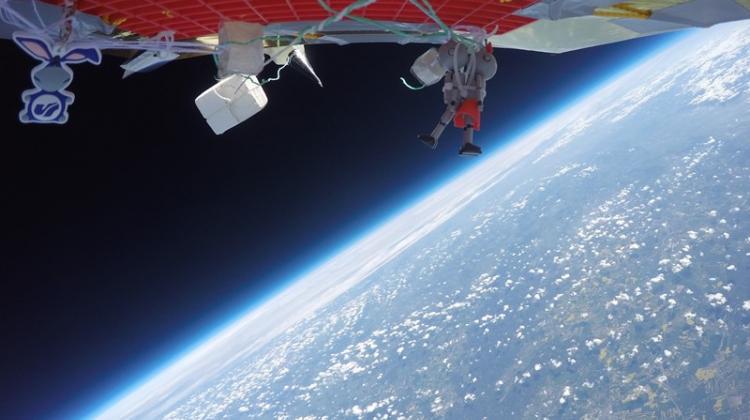A project from the University of Silesia is the best educational initiative in the Global Space Balloon Challenge 2019
 Photo: Fotolia
Photo: Fotolia
Microorganisms, spiders, barley seedlings and new materials have been sent to the stratosphere by scientists from the University of Silesia, who want to check how the conditions in the stratosphere will affect them. The initiative was awarded during the Global Space Balloon Challenge 2019.
The Global Space Balloon Challenge (GSBC) is an annual competition organized by the Stanford Space Initiative, in which teams conducting stratospheric balloon science experiments participate. The main goals of the GSBC is to promote science and inspire future generations of scientists and engineers.
The spokesperson of the University of Silesia in Katowice told PAP that in this year`s edition, the title of Best Educational Initiative went to the "Pamela Mission" project (Pamela = Plant, Aranae and Microorganism Exposure to the Light Activity In the Near Space Environment).
As part of the project, living organisms (microorganisms, spiders, spider eggs, selected barley seedlings and drought-resistant thale cress) and new materials (hydrogel membrane for the construction of future spacecrafts and extraterrestrial habitats, and a material used to make space antennas) have been sent to the stratosphere). It will allow scientists to study the impact of conditions in the stratosphere on them.
Researchers from the Faculty of Biology and Environmental Protection of the University of Silesia coordinate experiments in the field of genetics, physiology and microbiology, while Analog Astronaut Training Center (in cooperation with the Jagiellonian University) and Astronika (one of the mission sponsors) are responsible for the part regarding new materials. Team members from the Analog Astronaut Training Center have also cuilt a special passive thermal capsule prototype.
Dr. Agata Daszkowska-Golec from the Department of Genetics at the University of Silesia monitors research on the impact of conditions in the stratosphere on barley and thale cress seedlings, including wild varieties and mutants resistant to drought stress. Dr. Mirosław Nakonieczny - head of Department of Animal Physiology and Ecotoxicology, University of Silesia, coordinates work related to the experimental part concerning the impact of stress conditions on spiders from the species: Steatoda grossa (Theridiidae) and Parasteatoda tepidariorum (Theridiidae), including eggs removed from cocoons. Dr. Sławomir Sułowicz from the Department of Microbiology, University of Silesia, supervises the experimental part in the field of microbiology and studies the impact of conditions prevailing in the stratosphere on several strains of microorganisms.
New materials such as a hydrogel membrane for the construction of future spacecrafts and extraterrestrial habitats have also been analysed. Matt Harasymczuk and Dr. Agata Kołodziejczyk from the Analog Astronaut Training Center and scientists from the Faculty of Chemistry of the Jagiellonian University are responsible for that part. They also tested the material used to make antennas sent into space (this experiment was carried out in cooperation with Astronika) and electronic and telemetry systems (this part involved Tomasz Brol, an expert in the field of navigation of stratospheric and smaller balloons). The initiators and coordinators of the project were Dr. Joanna Foryś and Ireneusz Foryś from Unibot - a unit of the Open University at the University of Silesia.
Two HECON robots were also placed on board the research capsule. These are the Osozians, health robots of the OSOZ planet built by KAMFOFT SA, one of the project sponsors. USiolel, the mascot of the University of Silesia, also flew into the stratosphere.
The project is co-financed by the University of Silesia, the Faculty of Biology and Environmental Protection of the University of Silesia and the companies KAMSOFT SA and Astronika.
PAP - Science in Poland
kflo/ ekr/ kap/
tr. RL
Przed dodaniem komentarza prosimy o zapoznanie z Regulaminem forum serwisu Nauka w Polsce.















